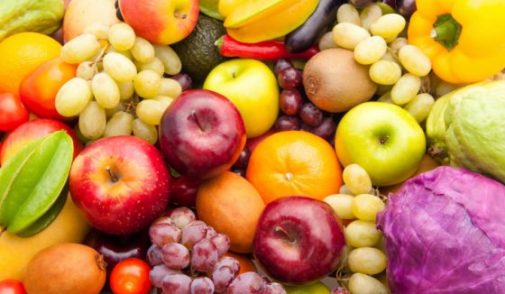Which fruit topped this year’s Dirty Dozen list (again)?

If you’re meandering through the produce aisle, searching for the fruits and vegetables likely to have the least pesticide residue, skip the strawberries and head toward the avocados.
That’s the message some consumers may take from the Dirty Dozen list released this week by Environmental Working Group (EWG). The non-profit, non-partisan organization says its mission is to empower people to live healthier lives in a healthier environment.
The group has been publishing a Dirty Dozen list for more than a decade as part of its Shopper’s Guide to Pesticides in Produce. This is the third consecutive year strawberries have topped the list.
All of the items on this year’s list were on the 2017 list, as well, although the order is slightly different. This year, the group added a 13th item: hot peppers.
EWG analyzes the most recent tests by the U.S. Department of Agriculture to compile the list. The group found that nearly 70 percent of samples of conventionally grown produce were contaminated with pesticide residues.
On the positive side, the group released a Clean Fifteen list of fruits and vegetables for which few, if any, residues were detected. Avocados top that list, followed by sweet corn and pineapples.
Before eating produce, the U.S. Food and Drug Administration recommends rinsing it thoroughly under running water. Alla Gutina, an Advocate Nurse and infection preventionist at Advocate Good Shepherd Hospital in Barrington, Ill., adds that that recommendation should be followed even if you don’t plan to eat the skin.
“It’s still important to wash your fruits and vegetables first so dirt and bacteria are not transferred from the surface when you’re peeling or cutting,” Gutina says.
Robert Carrara, a registered dietitian and diabetes educator at Good Shepherd, says it’s a good idea to rinse produce – even if the bag it comes in indicates that it’s pre-washed. He also suggests eating a variety of fruits and vegetables.
“That way, you have no consistent exposure to any specific type of residue,” he says.
Here’s the 2018 Dirty Dozen list in order:
- Strawberries
- Spinach
- Nectarines
- Apples
- Grapes
- Peaches
- Cherries
- Pears
- Tomatoes
- Celery
- Potatoes
- Sweet bell peppers
- Plus: Hot peppers
This is the Clean Fifteen list in order:
- Avocados
- Sweet corn
- Pineapples
- Cabbages
- Onions
- Sweet peas frozen
- Papayas
- Asparagus
- Mangoes
- Eggplants
- Honeydew melons
- Kiwis
- Cantaloupes
- Cauliflower
- Broccoli
Related Posts
Comments
11 Comments
About the Author
Kathleen Troher, health enews contributor, is manager of public affairs and marketing at Advocate Good Sheperd Hospital in Barrington. She has more than 20 years of journalism experience, with her primary focus in the newspaper and magazine industry. Kathleen graduated from Columbia College in Chicago, earning her degree in journalism with an emphasis on science writing and broadcasting. She loves to travel with her husband, Ross. They share their home with a sweet Samoyed named Maggie.


















Hi All, thank you for the above listings of fruit and vegetables. Do you know which category raspberries, blueberries, and blackberries fall into?
To be safe, purchase any thin skinned fruit only if it is organic. You still should clean before eating but at least you won’t have to worry about consuming any pesticides.
If the dirty dozen are organic does that remove or reduce the concern? Would they not have the pesticide residue?
Yes, buying organic removes the concern regarding pesticides since the organic farmer doesn’t use pesticides. I always pick the organic variety when it comes to fruit and veggies without a thick rind.
Buying organic does not remove the concern of pesticides. Organic farmers are required to use organic approved pesticides.
I heard this morning on WCPT radio that most produce now contains RoundUp. Since the EPA won’t ban it, we get to eat it.
Roundup is poison. Organic produce cannot have any of these pesticides. Otherwise, it would not be organic.
In addition, Halos or Cuties which are tangerines. This fruit is grown near “fracking”, and the water used is from the fracking procedures.
also ALL Melons should be wash b4 cutting open
Wish everyone could afford organic. Costs way too much. Does not fit into my budget.
What is your source? This list is almost identical to the list in the Vitamix book.